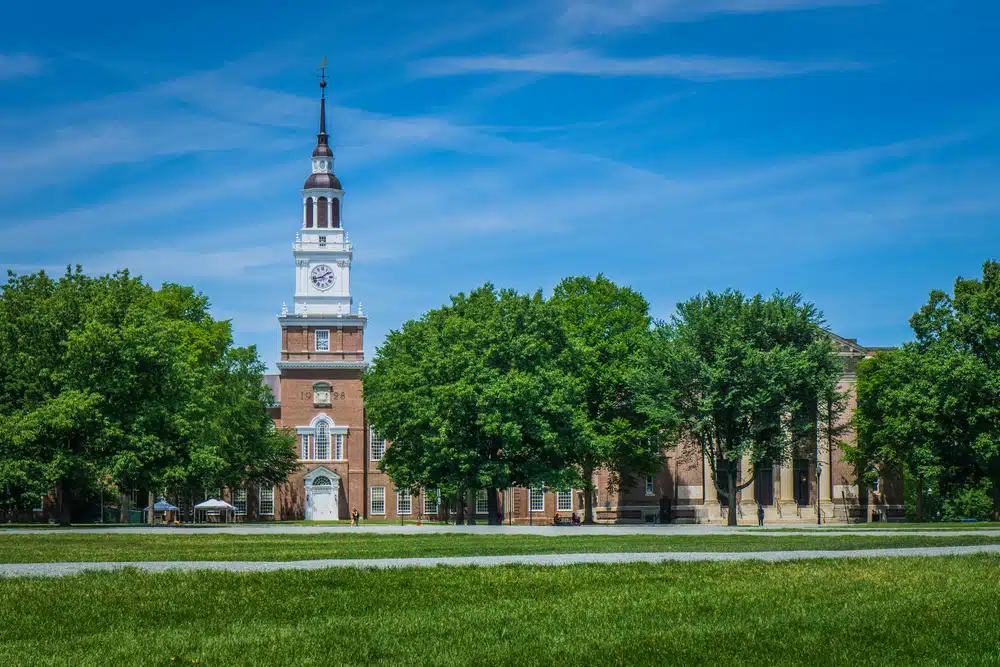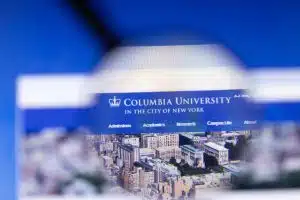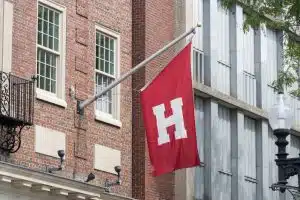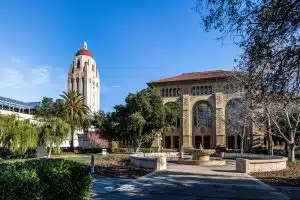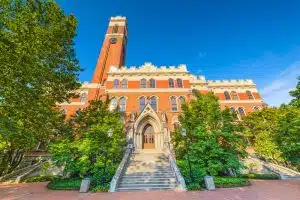Dartmouth Yield Rate
Yield rate is a prevalent aspect that significantly impacts any university’s prestige, especially those in the Ivy League such as Dartmouth. It primarily refers to the proportion of students who enroll after being offered admission. This article aims to comprehensively understand Dartmouth’s yield rate, its implications, and future predictions.
Defining Yield Rate
The yield rate, particularly in college admissions, is the percentage of accepted students who choose to enroll in a particular college or university. It gives a clear indication of the school’s popularity among successful applicants.
The yield rate’s importance emerges from its position in determining a college’s reputation. Applicants, educators, and rankings heavily rely on this statistic while assessing an institution’s popularity and academic excellence.
When students are accepted into multiple colleges, they often face a difficult decision in choosing which one to attend. The yield rate helps prospective students gauge the level of interest and satisfaction among accepted students at a particular college. It provides valuable insights into the overall student experience and the institution’s ability to meet the expectations of its student body.
Colleges with a high yield rate are often seen as highly desirable and prestigious. They attract a large number of qualified applicants who ultimately choose to enroll, creating a competitive academic environment. These institutions tend to have strong academic programs, renowned faculty, and a vibrant student community.
The Importance of Yield Rate in College Admissions
A higher yield rate signifies a college’s desirability among students. It’s seen as an affirmation of the school’s identity, course offerings, faculty strength, and overall student satisfaction. Schools with high yield rates are perceived as highly competitive academic environments with robust student communities.
Moreover, a high yield rate can positively impact a college’s rankings and reputation. It indicates that the institution is successful in attracting and retaining top-performing students, which is often associated with academic excellence.
From an admissions perspective, the yield rate plays a crucial role in shaping a college’s future strategies. Admissions officers closely analyze the factors that influence a student’s decision to enroll or decline an offer of admission. This information helps colleges refine their recruitment efforts, tailor their messaging, and improve their overall appeal to prospective students.
Colleges with a lower yield rate may face challenges in attracting students who have been accepted. They may need to reassess their marketing strategies, financial aid offerings, or campus resources to better align with the expectations and preferences of accepted students.
How Yield Rate Differs from Acceptance Rate
While both yield and acceptance rates are important indicators in college admissions, they represent different aspects. The acceptance rate is the percentage of applicants who are offered admission, irrespective of whether they decide to enroll or not.
On the other hand, the yield rate only considers those accepted students who go on to enroll in the university. Hence, it’s a measure of the attractiveness of the institution rather than its selectivity.
Acceptance rate and yield rate together provide a more comprehensive picture of a college’s admissions process. A low acceptance rate combined with a high yield rate suggests that the college is highly selective and sought after by accepted students. Conversely, a high acceptance rate coupled with a low yield rate may indicate that the college struggles to attract accepted students to enroll.
It’s important to note that yield rate can vary significantly across different colleges and universities. Factors such as location, academic reputation, campus culture, financial aid offerings, and specific program strengths can influence a student’s decision to enroll in a particular institution.
Overall, the yield rate is a valuable metric that helps colleges assess their appeal to accepted students and make informed decisions to enhance their academic offerings, campus resources, and overall student experience.
Dartmouth’s Yield Rate Explained
Dartmouth College, known for its commitment to undergraduate education, has a yield rate that varies each year based on several factors. It’s an essential element in understanding the relationship between Dartmouth and its aspiring students.
Historical Analysis of Dartmouth’s Yield Rate
Over the past decades, Dartmouth’s yield rate has fluctuated due to various factors. However, it maintains a competitive spot just like its Ivy League counterparts. This high yield rate aligns with Dartmouth’s reputation as an institution that emphasizes undergraduate education and has a strong sense of community.
This consistency is held in spite of occasional fluctuations, thereby showcasing Dartmouth’s resilience and desirability among prospective students.
One factor that has contributed to Dartmouth’s consistently high yield rate is its long-standing tradition of academic excellence. Dartmouth has a rich history dating back to its founding in 1769, and this legacy has attracted generations of students who are eager to be a part of a prestigious institution with a strong academic reputation.
Furthermore, Dartmouth’s commitment to providing a well-rounded education has also played a significant role in its yield rate. The college offers a wide range of academic programs, allowing students to explore their interests and passions while receiving a comprehensive education. From the humanities to the sciences, Dartmouth provides a rigorous curriculum that prepares students for success in their chosen fields.
Factors Influencing Dartmouth’s Yield Rate
Several factors come into play when considering Dartmouth’s yield rate. These include the quality of academic programs, faculty reputation, financial aid opportunities, campus culture, and overall prestige of the institution.
Another contributing factor is the early decision admission process, where students commit to attend Dartmouth if accepted. This binding decision contributes significantly to the College’s yield rate.
When it comes to academic programs, Dartmouth offers a diverse range of majors and minors, allowing students to tailor their education to their individual interests and career goals. The faculty at Dartmouth are renowned experts in their respective fields, providing students with a high-quality education and mentorship.
Financial aid opportunities also play a crucial role in Dartmouth’s yield rate. The college is committed to making education accessible to all qualified students, regardless of their financial background. Dartmouth offers generous financial aid packages, including scholarships, grants, and work-study opportunities, ensuring that students can afford to attend college.
In addition to its academic offerings and financial aid, Dartmouth’s campus culture is another factor that influences its yield rate. The college prides itself on fostering a close-knit community where students can form meaningful connections with their peers and faculty members. The strong sense of community at Dartmouth creates a supportive and inclusive environment that attracts prospective students.
Lastly, the overall prestige of Dartmouth as an Ivy League institution contributes to its yield rate. Dartmouth’s reputation for academic excellence, research opportunities, and successful alumni network makes it an attractive choice for many aspiring students.
Comparing Dartmouth’s Yield Rate to Other Ivy League Schools
Although Dartmouth holds a reputable position among the Ivy League schools, differences still exist when comparing yield rates. Each institution’s yield rate reflects its unique position among accepted students.
When delving into the fascinating world of Ivy League yield rates, it becomes evident that there is an interesting oscillation in these numbers over the years. It’s like a dance of numbers, with each school trying to outshine the others. However, despite this dance, Dartmouth consistently maintains a high yield rate, showcasing its academic influence and prestige.
It is truly remarkable to witness how Dartmouth’s yield rate often rivals that of schools like Harvard and Columbia. This fact alone speaks volumes about the desirability of Dartmouth among highly qualified students. The allure of the institution is undeniable, attracting top-notch individuals who are eager to embark on an extraordinary educational journey.
Dartmouth’s Position in the Ivy League Yield Rate Spectrum
Despite the stiff competition in the Ivy League, Dartmouth remains an appealing choice for many bright students. Its yield rate keeps it in a competitive position within the league, signifying the institution’s appeal and the value students attach to a Dartmouth education.
However, it is important to note that comparing yield rates across Ivy League schools only provides a selective view. Each institution has its own unique appeals and strengths that attract different student demographics. Dartmouth, with its picturesque campus nestled in the scenic Upper Valley of New Hampshire, offers a distinct experience that resonates with certain individuals. The college’s commitment to undergraduate education, small class sizes, and close-knit community fosters an environment where students can thrive academically and personally.
Moreover, Dartmouth’s strong emphasis on interdisciplinary studies and experiential learning opportunities sets it apart from its Ivy League counterparts. The college’s renowned D-Plan, which allows students to take advantage of off-campus programs and internships, adds another layer of appeal to prospective students. This unique approach to education ensures that Dartmouth graduates are not only well-versed in their respective fields but also possess a broad perspective that enables them to tackle complex real-world challenges.
Furthermore, Dartmouth’s commitment to diversity and inclusivity is evident in its vibrant student body. The college actively seeks to create an environment where individuals from all backgrounds can thrive and contribute to the rich tapestry of the Dartmouth community. This commitment to diversity not only enhances the educational experience but also prepares students to navigate an increasingly interconnected and diverse world.
In conclusion, while Dartmouth’s yield rate is indeed impressive and positions it favorably among the Ivy League schools, it is crucial to recognize that yield rates are just one aspect of the college selection process. Prospective students should consider a multitude of factors, such as academic programs, campus culture, and personal fit, to make an informed decision about their higher education journey. Dartmouth, with its rich history, academic excellence, and unique offerings, continues to attract exceptional individuals who are eager to make their mark on the world.
Implications of Dartmouth’s Yield Rate
The yield rate of Dartmouth carries substantial implications for both prospective students and the college itself. An understanding of these implications can influence strategic decisions by both parties.
When examining the implications of Dartmouth’s yield rate, it becomes clear that it has a significant impact on future applicants. A high yield rate can be attractive to prospective students as it indicates the college’s popularity among its accepted applicants. This popularity can be seen as a testament to the quality of education and overall experience that Dartmouth offers. However, it also implies a highly competitive environment, which potential applicants must take into account when considering their college options.
Furthermore, the yield rate can also guide applicants in evaluating whether they would thrive at Dartmouth, based on the choices of students similar to them. By analyzing the decisions made by accepted students, prospective applicants can gain insights into the type of individuals who are drawn to Dartmouth and whether they align with their own interests, goals, and values.
Dartmouth’s Strategies to Improve Yield Rate
Dartmouth continually refines its strategies to improve and maintain its yield rate. These initiatives range from highlighting its robust academic programs to enhancing campus life, financial aid packages, entrepreneurial opportunities, and more.
One of the key factors contributing to Dartmouth’s high yield rate is its holistic admission process. Unlike a purely numbers-based approach, Dartmouth focuses on getting to know the applicant as a whole. This comprehensive evaluation allows the college to identify individuals who not only possess exceptional academic abilities but also demonstrate a strong fit with Dartmouth’s values, culture, and community.
In addition to its holistic admission process, Dartmouth invests in various initiatives to attract and retain accepted students. The college places a strong emphasis on showcasing its robust academic programs, which encompass a wide range of disciplines and provide students with a well-rounded education. Dartmouth also strives to enhance campus life by offering a vibrant and inclusive community, providing students with numerous extracurricular activities, clubs, and organizations to engage in.
Recognizing the financial aspect of college education, Dartmouth ensures that its financial aid packages are competitive and accessible to a diverse range of students. By offering generous financial aid, the college aims to alleviate the burden of tuition costs and make a Dartmouth education more attainable for students from various socioeconomic backgrounds.
Moreover, Dartmouth recognizes the importance of fostering an entrepreneurial spirit among its students. The college provides numerous resources and opportunities for students to explore their entrepreneurial interests and turn their innovative ideas into reality. By nurturing an environment that encourages and supports entrepreneurship, Dartmouth attracts students who are driven, creative, and eager to make a positive impact on the world.
Overall, Dartmouth’s strategies to improve its yield rate encompass a comprehensive approach that focuses on academic excellence, campus life, financial accessibility, and entrepreneurial opportunities. By continuously refining these strategies, Dartmouth aims to attract and retain a diverse and talented student body that will contribute to the college’s vibrant intellectual community.
Predicting Future Yield Rates at Dartmouth
Predicting yield rates, especially in an unpredictable environment, can be challenging. However, understanding the significant factors that influence the decision of accepted students can provide some insight.
Role of Alumni and Current Students
The experience shared by current students and alumni significantly influences accepted students’ decisions. It paints a vivid picture of what it would be like to study at Dartmouth. Hence, the positive testimonials and experiences offered by the Dartmouth community theoretically should lead to higher yield rates.
A strong network of alumni further contributes to the attractiveness of Dartmouth, promising a bright future beyond the campus.
The Effect of University Policies and Initiatives on Yield Rate
The policies of Dartmouth University also have a direct impact on its yield rate. Strategies such as providing ample research opportunities, emphasis on global education, commitment to sustainability, and generous financial aid policies contribute to attracting prospective students and thus maintaining a high yield rate.
Regardless of the ever-changing higher education landscape, Dartmouth’s commitment to student success and academic excellence makes it a desirable choice, ensuring its yield rates remain high.



